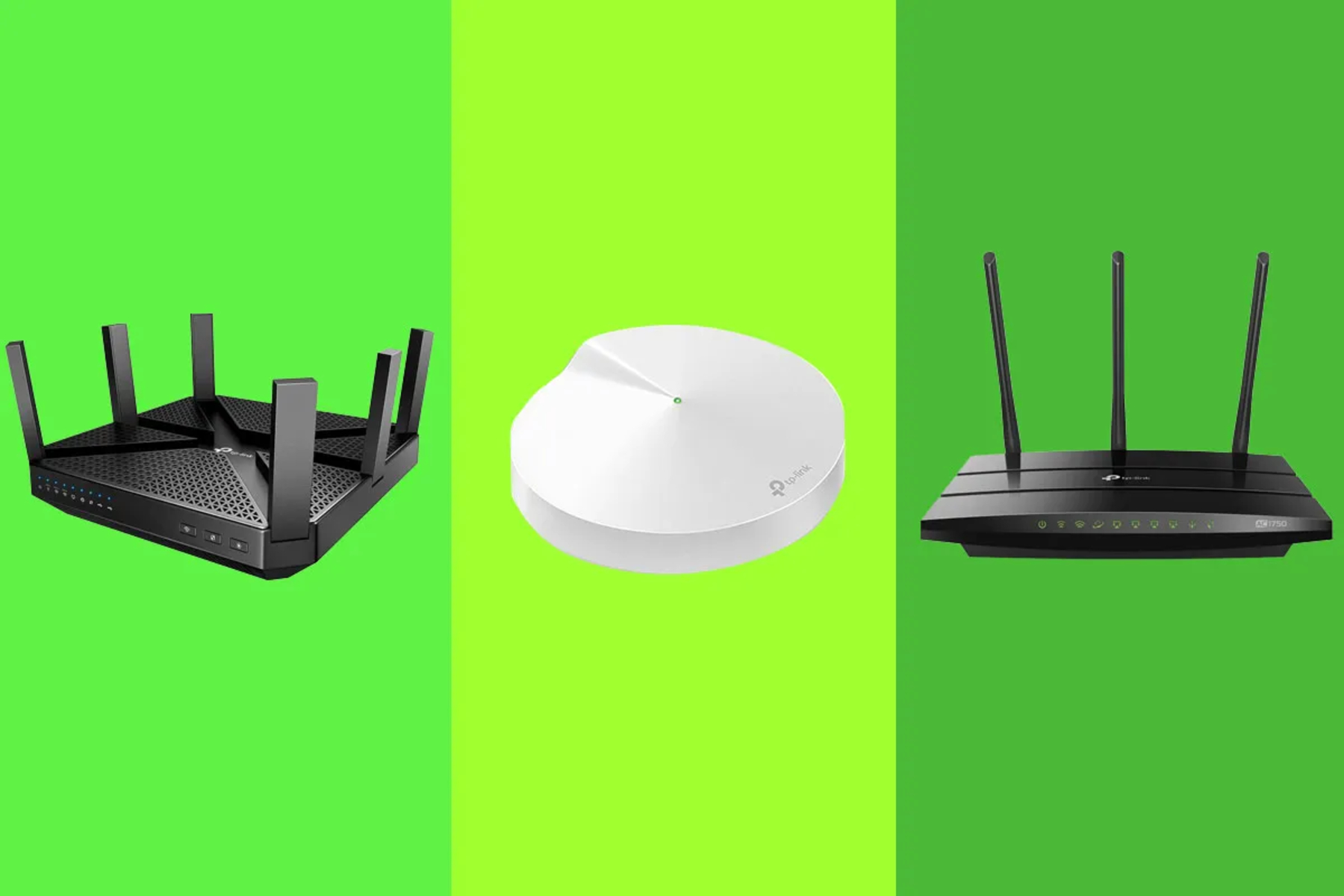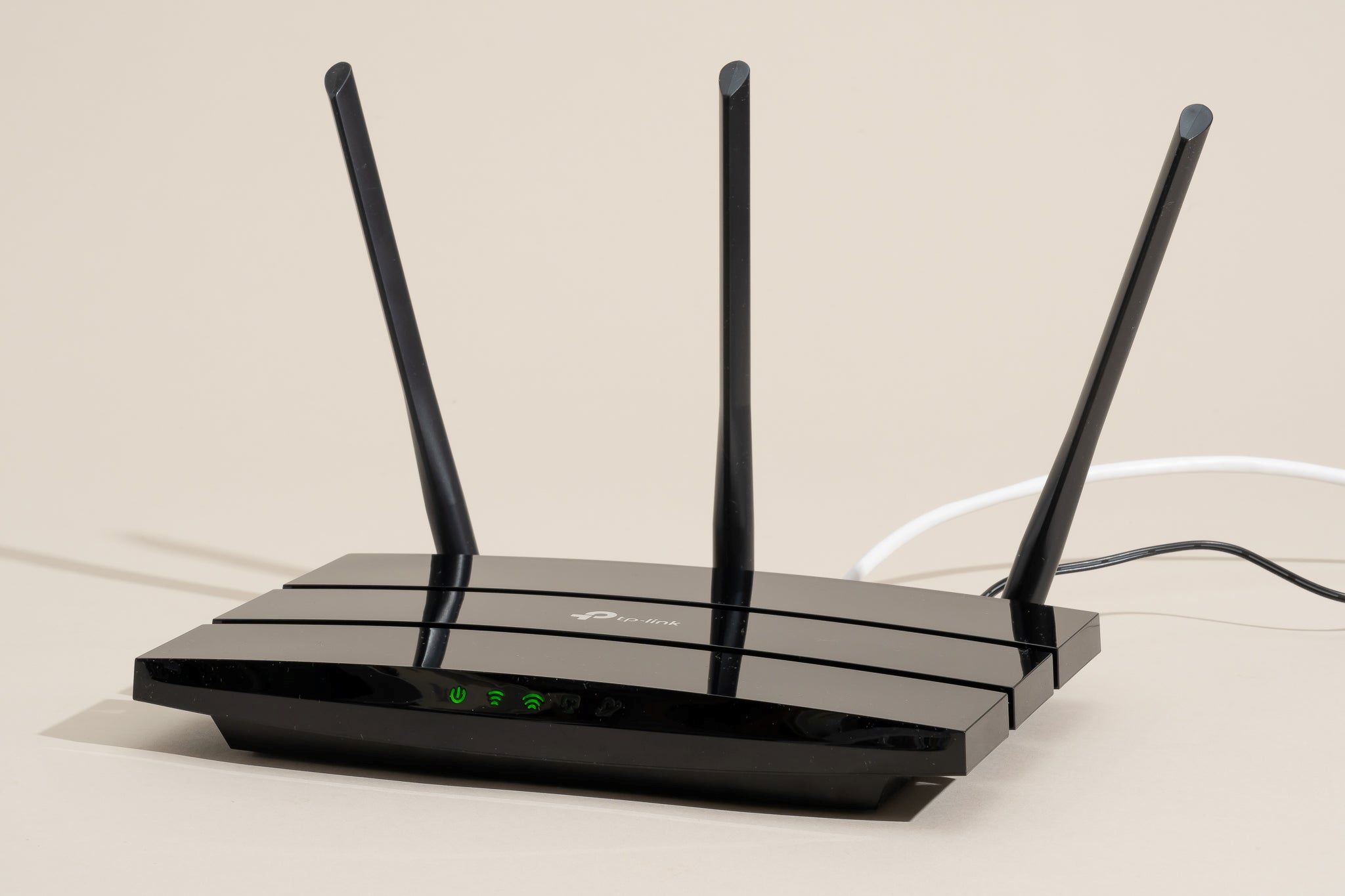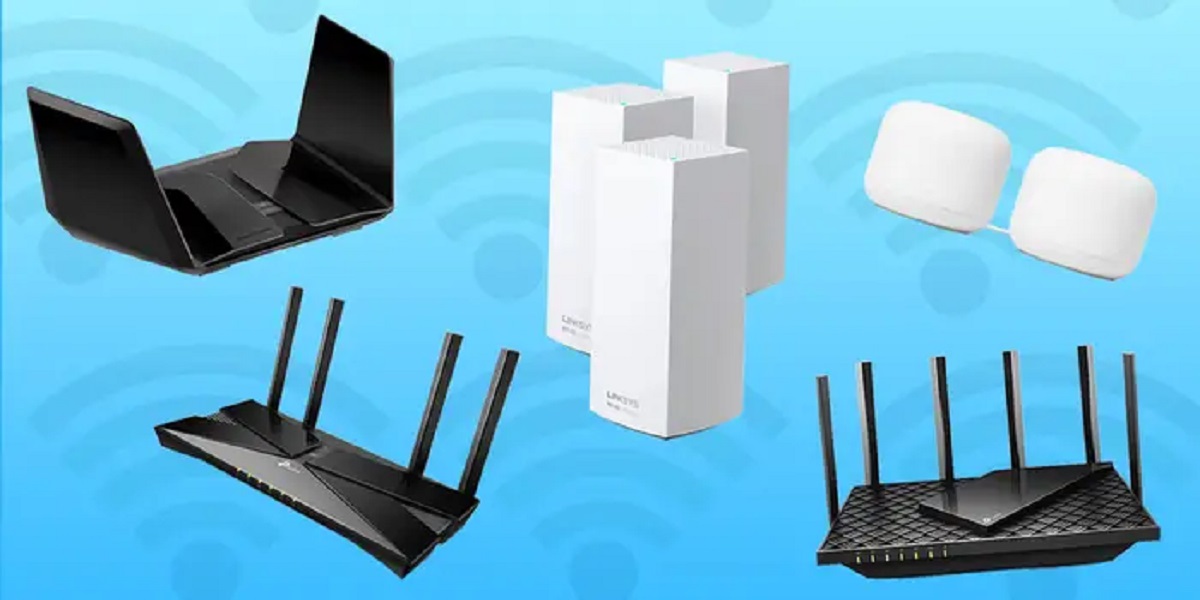Introduction
Choosing the right wireless router is crucial to ensure a reliable and fast internet connection for your home or office. With the ever-increasing number of connected devices and the growing need for seamless online activities, finding the perfect wireless router has become essential.
In this article, we will explore the key considerations you should keep in mind while selecting a wireless router. From speed and performance to coverage and security features, we will delve into the factors that play a crucial role in determining the best wireless router for your needs.
Investing in a high-quality wireless router ensures that you can enjoy smooth streaming, lag-free gaming, and uninterrupted internet access throughout your space. By understanding these crucial aspects, you will be equipped with the knowledge to make an informed decision that aligns with your specific requirements.
Additionally, we will explore the importance of compatibility with your Internet Service Provider (ISP), ease of setup and use, budget considerations, and any additional features or customizations that may enhance your overall experience with the wireless router.
So, if you are ready to delve deeper into the world of wireless routers and find the perfect one that meets your needs, let’s begin our journey of exploration and discovery.
Considerations when buying a wireless router
When it comes to buying a wireless router, there are several important factors to consider to ensure you make the right choice. To help you with your decision, let’s explore these considerations in detail:
- Speed and Performance: One of the most critical factors to consider is the speed and performance of the wireless router. Look for routers that offer fast data transfer speeds, preferably with support for the latest wireless standards such as 802.11ac or Wi-Fi 6. Higher speeds ensure smoother performance for activities like streaming, gaming, and file transfers.
- Coverage and Range: The coverage and range of a wireless router determine how far the signal can reach in your home or office. Consider the size of your space and the number of floors or walls it needs to cover. Look for routers with strong antennas or mesh systems that can provide reliable coverage in every corner of your space.
- Number of Devices: Take into account the number of devices that will be connected to the router. If you have a large number of devices, such as smartphones, tablets, laptops, smart TVs, and smart home devices, opt for a router with higher capacity and the ability to handle multiple connections simultaneously.
- Dual-band or Tri-band: Wireless routers are available in dual-band or tri-band options. Dual-band routers operate on both 2.4GHz and 5GHz frequencies, offering flexibility for different devices and older Wi-Fi standards. Tri-band routers, on the other hand, provide an additional 5GHz band, reducing congestion and improving overall performance in crowded environments.
- Security Features: Security is a paramount concern when it comes to wireless routers. Look for routers that offer advanced security features, such as WPA3 encryption or built-in firewalls. Additionally, routers with guest network capabilities and parental controls can provide added convenience and peace of mind.
- Compatibility with Internet Service Provider (ISP): Ensure that the wireless router you choose is compatible with your ISP. Check the compatibility list provided by the router manufacturer or consult with your ISP for recommendations. This ensures a seamless connection and avoids any potential compatibility issues.
- Budget: Consider your budget when selecting a wireless router. While there are high-end options available with advanced features, there are also affordable routers that offer excellent performance for basic internet needs. Set a budget that aligns with your requirements and explore routers within that range.
- Ease of Setup and Use: Look for routers that offer easy setup and management options. Consider routers with intuitive interfaces and user-friendly mobile apps that allow you to control and monitor your network effortlessly.
- Additional Features and Customizations: Finally, consider any additional features or customizations that may enhance your wireless networking experience. These features could include USB ports for file sharing, network prioritization capabilities, or support for virtual private networks (VPNs).
By considering these factors and weighing your specific needs, you can choose a wireless router that fits your requirements and provides a seamless and reliable internet connection for all your devices.
Speed and Performance
In today’s fast-paced digital world, having a wireless router with exceptional speed and performance is crucial. The speed of your wireless router determines how quickly data can be transmitted and received, making it essential for activities such as streaming, gaming, video conferencing, and downloading large files.
When considering the speed and performance of a wireless router, you need to pay attention to two key factors: the wireless standard it supports and the maximum data transfer rate it can achieve.
The wireless standard, also known as the Wi-Fi standard, refers to the technology used by the router to transmit and receive data wirelessly. The most common wireless standards are 802.11ac (Wi-Fi 5) and the newer 802.11ax (Wi-Fi 6). Wi-Fi 6 offers faster speeds, lower latency, and better performance in congested environments compared to Wi-Fi 5. However, it’s important to note that your devices also need to support Wi-Fi 6 to take full advantage of its capabilities.
Another factor to consider is the maximum data transfer rate or speed that the wireless router can provide. This is usually indicated in Mbps (megabits per second) and can range from a few hundred Mbps to several gigabits per second. Higher transfer rates ensure smoother and faster online experiences, especially when multiple devices are connected and bandwidth-intensive tasks are being performed.
It’s important to note that the actual speed you experience may be lower than the advertised maximum speed due to various factors, including the distance of your device from the router, obstacles in the signal path, and interference from other electronic devices.
When selecting a wireless router for speed and performance, consider your internet plan and the speeds provided by your internet service provider (ISP). Choose a router that can handle the maximum speed offered by your ISP to ensure you get the most out of your connection.
Additionally, if you engage in activities that require high bandwidth, such as 4K streaming or online gaming, consider routers with features like Quality of Service (QoS). QoS allows you to prioritize specific devices or applications, ensuring a stable and lag-free connection for the tasks that require it most.
By choosing a wireless router with superior speed and performance, you can enjoy fast and reliable internet connectivity, allowing you to seamlessly navigate the digital landscape without any disruptions.
Coverage and Range
When it comes to a wireless router, coverage and range are crucial factors to ensure that everyone in your home or office can enjoy a strong and reliable internet connection. The coverage and range of a router determine how far the Wi-Fi signal can reach, and how well it can penetrate through walls, floors, and other obstacles.
The coverage area of a wireless router is influenced by various factors, including the router’s transmit power, antenna design, and the presence of any signal-boosting technologies such as beamforming or mesh networking.
When selecting a router for optimal coverage and range, it’s important to consider the size and layout of your space. If you have a large home or office with multiple floors, look for routers that offer strong and long-range capabilities. Routers with multiple antennas or mesh systems can provide wider coverage and eliminate dead zones in hard-to-reach areas.
Mesh networking is a particularly effective solution for larger spaces. It involves placing multiple mesh nodes throughout your home or office, creating a seamless network that eliminates coverage gaps and ensures a consistent Wi-Fi signal in every corner. Additionally, mesh systems often come with dedicated backhaul channels, allowing for faster and more reliable data transmission between nodes.
It’s worth noting that the physical placement of your router also plays a significant role in its coverage and range. Keep your router elevated and positioned in a central location to maximize coverage. Avoid placing it inside cabinets or behind walls, as this can hinder the signal’s ability to reach all areas of your space.
Furthermore, certain environmental factors can impact wireless signal strength, such as thick walls, appliances, and other electronic devices that emit radio signals. If you have a challenging environment, consider using Wi-Fi range extenders or access point solutions to extend the coverage of your wireless network.
By understanding your coverage needs and choosing a wireless router with excellent range capabilities, you can ensure that every corner of your home or office receives a strong and reliable Wi-Fi signal. This allows you to connect and use your devices seamlessly, whether you’re in the living room, bedroom, backyard, or any other area within the coverage area.
Number of Devices
In today’s connected world, where multiple devices are simultaneously accessing the internet, it is important to consider the number of devices that will be connected to your wireless router. Each device, whether it’s a smartphone, tablet, laptop, smart TV, or smart home device, requires a share of the available bandwidth.
When choosing a wireless router, opt for one that can handle the number of devices you plan to connect without experiencing significant drops in performance. Routers with higher capacity and advanced technologies will ensure that all devices can access the internet smoothly and without interruption.
Many routers specify the maximum number of simultaneous connections they can support. However, it’s important to note that this number varies depending on the router’s processing power, memory, and overall hardware capabilities.
If you have a large number of devices or have a smart home setup with various connected devices, consider routers with features like MU-MIMO (Multi-User, Multiple Input, Multiple Output) technology. MU-MIMO allows the router to communicate with multiple devices simultaneously, reducing congestion and improving performance.
Analyze your usage patterns and the number of devices that will be actively using the internet at any given time. For example, if you have a family of four with multiple smartphones, laptops, and gaming consoles, consider a router that can handle a large number of simultaneous connections.
Furthermore, be mindful of bandwidth-intensive activities such as streaming 4K videos or online gaming. These activities require a significant amount of bandwidth. Look for routers with advanced bandwidth management features, like QoS (Quality of Service), which allows you to prioritize certain devices or applications over others to ensure a smooth online experience.
By choosing a wireless router that can accommodate the number of devices you have, you can avoid slow connections, buffering, and overall congestion on your network. This ensures that all devices can enjoy a fast and reliable internet connection, regardless of the number of devices connected simultaneously.
Dual-band or Tri-band
When considering a wireless router, one important decision to make is whether to go for a dual-band or tri-band router. These terms refer to the number of frequency bands that the router operates on and can have a significant impact on your Wi-Fi experience.
A dual-band router operates on two frequency bands: 2.4GHz and 5GHz. The 2.4GHz band provides longer range coverage but may be more susceptible to interference from other devices, such as cordless phones and microwaves. The 5GHz band offers faster speeds and is less crowded, making it ideal for activities like HD streaming and gaming.
A tri-band router, on the other hand, offers an additional 5GHz band, providing even more wireless capacity and reducing congestion in heavily populated areas. This extra band can be particularly beneficial for homes or offices where multiple devices are simultaneously accessing the internet or for those with high-bandwidth needs.
When deciding between a dual-band and a tri-band router, consider the number of devices that will be connected and the types of activities that will be performed. If you have a large number of devices or engage in high-bandwidth activities, such as 4K streaming or online gaming, a tri-band router will provide a more reliable and faster connection.
It’s important to note that not all devices support the 5GHz band. Older devices, such as certain IoT devices or older smartphones, may only be compatible with the 2.4GHz band. If you have a mix of devices, a dual-band router can provide flexibility by offering both frequency bands.
Additionally, dual-band routers often come at a lower price point compared to their tri-band counterparts. If you have a smaller space with fewer devices or don’t have specific high-bandwidth needs, a dual-band router may be sufficient for your requirements.
Ultimately, the decision between a dual-band and tri-band router depends on your specific needs and the devices that will be connected. Evaluate your usage patterns, the number of devices, and your budget to determine the most suitable option for your wireless networking needs.
Security Features
When it comes to choosing a wireless router, security should be a top priority. Protecting your network and devices from potential threats is essential in today’s digital age, where cyber-attacks and unauthorized access to personal information are becoming increasingly common.
When evaluating the security features of a wireless router, there are several key aspects to consider:
- Encryption: Look for routers that support the latest encryption standards. WPA3 (Wi-Fi Protected Access 3) is the most current and secure encryption protocol available. It offers stronger protection against unauthorized access compared to older standards like WPA2.
- Firewall: A built-in firewall is an important security feature that helps protect your network from hackers and malware. Ensure that the router you choose has an effective firewall that can block suspicious incoming and outgoing traffic.
- Guest Network: Guest network functionality allows you to create a separate network for visitors, keeping them isolated from your main network. This ensures that guests can access the internet without compromising the security of your primary devices and data.
- Parental Controls: If you have children at home, look for routers that offer robust parental control features. These features allow you to set restrictions on specific websites or allocate time limits for internet access, ensuring a safer online environment for children.
- Automatic Firmware Updates: Regular firmware updates are crucial for maintaining security as they patch vulnerabilities and bugs. Opt for routers that offer automatic firmware updates to ensure that you always have the latest security patches installed.
It’s also important to establish strong passwords for both your router’s admin panel and Wi-Fi network. Use complex passwords consisting of a combination of uppercase and lowercase letters, numbers, and symbols. Avoid using default or easily guessable passwords, as they can make your network vulnerable.
Ultimately, investing in a wireless router with robust security features will help safeguard your network and protect your sensitive information. Remember to regularly update your router’s firmware and monitor for any security alerts or notifications from the manufacturer.
Compatibility with Internet Service Provider (ISP)
When purchasing a wireless router, it is crucial to consider its compatibility with your Internet Service Provider (ISP). Not all routers work seamlessly with all ISPs, so ensuring compatibility is essential for establishing a reliable and uninterrupted internet connection.
Compatibility issues can arise due to various factors, including different technologies or connection types used by ISPs, such as DSL, cable, or fiber. In some cases, ISPs may require specific router configurations or hardware in order to connect to their network.
To determine compatibility, you can take the following steps:
- Consult with your ISP: Reach out to your ISP and inquire about compatible router models or any specific requirements they may have. They can provide valuable information and recommendations based on your particular connection type and needs. They may also provide a list of approved routers that are known to work well with their network.
- Research compatible router options: Investigate routers known to be compatible with your ISP. You can check the router manufacturer’s website or online forums for information regarding compatibility. Look for routers that explicitly state compatibility with your specific ISP or the connection type you use.
- Verify connection type support: Ensure that the router you choose supports the connection type provided by your ISP. For example, if your ISP delivers internet service through a fiber-optic connection, make sure the router is compatible with fiber-optic connections.
By selecting a router that is compatible with your ISP, you can avoid any connectivity issues and ensure a smooth and reliable internet connection. A compatible router will also make it easier to set up your network, as it will be designed to work seamlessly with your ISP’s network infrastructure.
Additionally, keep in mind that as technology advances and ISPs upgrade their networks, it is important to verify the compatibility of your router with future network upgrades. Investing in a router that supports the latest technologies and standards can future-proof your network, ensuring compatibility for years to come.
Overall, ensuring compatibility between your wireless router and your ISP is essential to establish a reliable and efficient internet connection. Take the time to research and verify compatibility to avoid any potential issues and enjoy a seamless online experience.
Budget
When shopping for a wireless router, your budget plays a significant role in determining the options available to you. Wireless routers are available in a wide range of price points, so it’s important to set a budget that aligns with your needs and requirements.
Consider the following factors when determining your router budget:
- Features and Performance: Higher-priced routers often come with more advanced features and better performance, such as faster speeds, greater range, and additional security options. If you have specific needs or high-bandwidth requirements, investing in a higher-priced router with superior capabilities may be worth the additional cost.
- Space and Device Requirements: Assess the size of your space and the number of devices that will be connected to your network. If you have a large area or a significant number of devices, you may need a router with more power and range. In such cases, allocating a larger portion of your budget for a higher-quality router can ensure optimal performance.
- Future-Proofing: Consider the longevity of your router investment. Technological advancements and network upgrades occur regularly, so investing in a router with the latest wireless standards (such as Wi-Fi 6) may provide future-proofing and save you from having to upgrade in the near future.
- Budget Constraints: Of course, your overall budget constraints should be a deciding factor. Evaluate your financial situation and allocate a reasonable amount for your router purchase. Keep in mind that while higher-priced routers may offer more features, there are also affordable routers available that can provide satisfactory performance for basic internet needs.
It’s essential to strike a balance between your budget and the features and performance you desire. Prioritize the features that are most important to you and allocate your budget accordingly.
Once you have determined your budget, you can find routers within that price range by researching online, comparing prices, and reading reviews. Remember to consider the reputation of the manufacturer and the overall value the router provides for its price.
By setting a realistic budget and considering your specific needs, you can find a wireless router that meets your requirements without breaking the bank. Remember that a router is an investment in your internet connectivity, so it’s worth considering the long-term benefits and potential cost savings that a high-quality router can offer.
Ease of Setup and Use
When choosing a wireless router, it’s essential to consider its ease of setup and use. A router that is user-friendly and offers straightforward configuration can save you time and frustration during the initial setup process and throughout its usage.
Here are some aspects to consider regarding the ease of setup and use:
- User-friendly Interface: Look for routers with intuitive and user-friendly interfaces. A well-designed web interface or mobile app can make the setup and management of your network much easier. It should provide clear instructions and easy access to essential settings.
- Quick Installation: Consider routers that offer quick and hassle-free installation processes. Some routers provide setup wizards or automatic configuration options, allowing you to get your network up and running in no time.
- Easy Network Management: Check for routers that offer straightforward network management features. This can include the ability to change Wi-Fi passwords, monitor devices connected to the network, and configure parental controls. An intuitive interface will make it simpler to manage and customize your network whenever necessary.
- Mobile App Support: Routers that come with dedicated mobile apps can enhance user experience by allowing you to manage your network directly from your smartphone or tablet. Mobile apps often provide simplified interfaces and convenient access to essential settings while on the go.
- Help and Support: Consider routers from manufacturers that offer comprehensive documentation, support forums, and customer service options. Having access to clear instructions, troubleshooting guides, and responsive customer support can greatly assist you in resolving any issues that may arise during the setup or usage of your router.
Avoid routers that may have complex setups or configurations that require advanced technical knowledge. Opt for routers that prioritize user-friendly features and straightforward processes.
Before making a purchase, you can consult customer reviews and forums to get an idea of the ease of setup and use that a specific router offers. Pay attention to feedback from users who may have a similar technical background or level of expertise as you.
By choosing a wireless router with an easy setup and user-friendly interface, you can simplify the process of managing your network and make adjustments whenever necessary without unnecessary complications or technical expertise.
Additional Features and Customizations
When selecting a wireless router, it’s worth considering additional features and customizations that can enhance your overall networking experience. These features can vary depending on the router model and manufacturer, so it’s important to assess your specific needs and preferences.
Here are some additional features and customizations to consider:
- USB Ports: Routers equipped with USB ports allow you to connect external devices like printers or storage drives. This enables you to share files across your network or set up a network-attached storage (NAS) for convenient access to your files from multiple devices.
- Quality of Service (QoS): QoS features allow you to prioritize certain devices or applications on your network. This can be beneficial if you have bandwidth-intensive activities, such as online gaming or video streaming, that require a stable and uninterrupted connection.
- VPN Support: If you value privacy and security, consider routers that offer Virtual Private Network (VPN) support. This feature allows you to create secure connections to remote networks or encrypt your internet traffic for added protection.
- Advanced Customizations: Some routers offer advanced customization options for advanced users. This can include the ability to adjust network settings, create custom firewall rules, or configure virtual LANs (VLANs) for more granular control over your network.
- Smart Home Integration: If you have a smart home setup, look for routers that are compatible with popular smart home platforms or offer built-in support for smart home devices. This integration can simplify the management and control of your smart devices from a central hub.
Consider your specific needs and priorities when evaluating additional features and customizations. While some features may be essential for certain users, others may find them unnecessary or too complex for their requirements.
It’s important to note that additional features and customizations often come at a higher cost. Therefore, allocate your budget accordingly and prioritize the features that align with your specific needs.
Research different router models, read product descriptions and user reviews, and consult with experts or enthusiasts in online forums to gain insights into the additional features and customizations offered by different routers. Guidance from experienced users can help you determine which features will truly enhance your networking experience.
By identifying and selecting a wireless router with the additional features and customizations that align with your needs, you can personalize and optimize your network to suit your specific requirements.
Conclusion
Choosing the right wireless router is crucial for ensuring a reliable and high-performing internet connection in your home or office. By considering the various factors discussed in this article, including speed and performance, coverage and range, number of devices, dual-band or tri-band options, security features, compatibility with your ISP, budget, ease of setup and use, and additional features and customizations, you can make an informed decision that meets your specific needs.
Assess your requirements and prioritize the features that matter most to you. If you engage in bandwidth-intensive activities like streaming 4K videos or online gaming, prioritize routers with higher speeds and advanced features such as QoS. If you have a larger space or multiple floors, consider routers with strong coverage and range capabilities or explore mesh networking options to eliminate dead zones.
Ensure that your chosen wireless router is compatible with your ISP to avoid any connectivity issues. Additionally, prioritize routers with robust security features to protect your network and devices from potential threats.
Consider your budget carefully and find a balance between the features and performance you desire and the amount you are willing to spend. Look for routers with user-friendly interfaces and easy setup processes to simplify the management of your network.
Finally, explore additional features and customizations that align with your specific needs, such as USB ports, QoS, VPN support, or smart home integration.
By taking these considerations into account, you can choose a wireless router that provides a seamless, reliable, and secure internet experience for all your devices. Happy browsing!

























